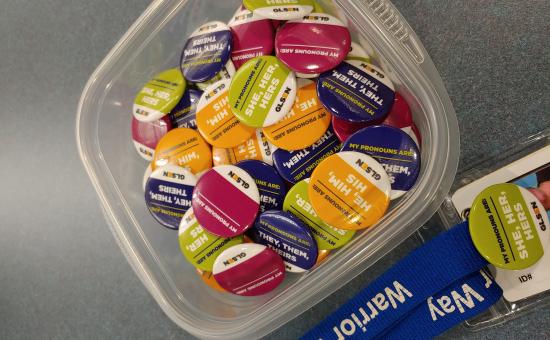Creating an environment of inclusion through student pronouns
06/08/2021
ISTA member Rain Smith contributed content for our Pride Month blog series on providing inclusion through the use of student pronouns. Smith is an award-winning school library media specialist at Whiteland Community High School. She is an active member of her local, Clark-Pleasant Education Association, and a hub coordinator of the ISTA/NEA Early Leadership Institute.
As the adage goes, “See a need; fill a need.”
I recognized a need for students to have a quick, easy way to communicate their pronouns at school. As adults, we put our pronouns in bios, in Zoom names, on conference badges and even in email signatures. Declaring pronouns has become a more accepted and common practice professionally, so why not for students?
I was looking for a simple, non-invasive tool to help students feel at ease in sharing their pronouns. Why not pins or buttons? After shopping around, I discovered that GLSEN, the national organization that has supported LGBTQ+ youth for more than 30 years, had just what I was looking for at a reasonable price. I obtained some pins and put them in a bowl in the Media Center where lots of free stuff to take is kept. I did not advertise the pins, but they were easily available to anyone who wanted to take one.
One of my student teacher assistants was the first to take a pin. Then they invited their friends. This pattern kept repeating over and over, with students saying, “I heard you have a pin I could have.” The bowl emptied, and I needed to order another batch. As the word spread, I have had to refill the bowl multiple times now this school year – giving out more than 300 pins so far to both students and staff.
Many are wearing them on their lanyards with their IDs. Others have been sighted on backpacks. All of this has led to many wonderful interactions this school year with students. Pronoun pins were a small and simple way to fill a great need. As if I needed proof, one day a small group of friends dropped in to get pins. I asked if they needed anything else. One of the students said to me on the way out, “Thank you so much for doing this. It makes me feel validated.”
